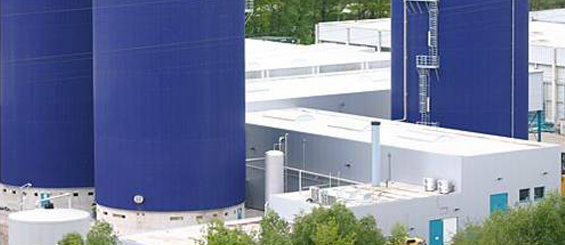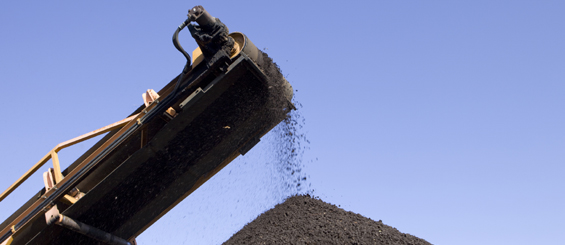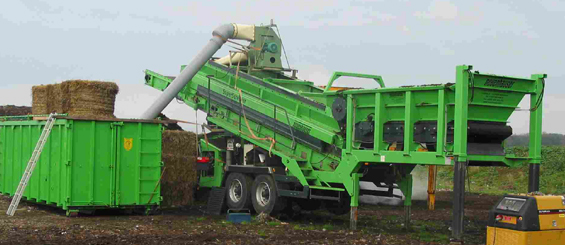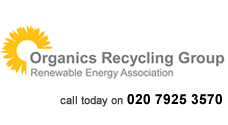Adverts
Modernising Biowaste - Technical Guidance on Aerobic and Anaerobic Treatment of Biodegradable Wastes
The recent Composting guidance released by the EA for industry consultation has been written by Jacobs Engineering U.K. Ltd on behalf of the Environment Agency (EA) as part of their Modernising Biowaste work programme. The programme also includes the following draft guidance documents: Anaerobic Digestion Technical Guidance, Mechanical Biological Treatment and Mechanical Heat Treatment and Framework for assessing suitability of waste going to anaerobic digestion, composting and biological treatment..
From the EAâÂÂs perspective the guidance documents have been produced to âÂÂprovide new best practice guidance to assist in the development, delivery, operation and regulation of anaerobic treatment and composting processes and installationsâÂÂ. In light of imminent implementation of Industrial Emission Directive (IED) the guidance documents are intended to provide a background source of information and create a basis for Best Available Technique (BAT) guidance for industry, which is due to be published for consultation later in 2013. The guidance documents are intended for operators and developers of anaerobic treatment, composting and MBT operators and the EAâÂÂs regulatory staff and field officers who âÂÂwill use this guidance as a framework for assessing current and new developmentsâÂÂ, which fall under IED capacity threshold limits or to improve waste operations sitesâ performances in case of any non-compliance issues. In relation to IED, we are still awaiting BREFs, so-called BAT reference documents and so, after being published for the first time, the guidance will be revised as EU BREF documents are developed. The review of these guidance documents is due to start later this year. In the meantime, in the event of IED enters force before the publication of the new guidelines, Sector Guidance Note S5.06 is the latest document providing information on best available technique.
The Environment Agency has invited the Organics Recycling Group (ORG, previously AfOR) to provide comments on the âÂÂComposting Technical Guidance'. ORG has collated all comments received from its members, which included compost producers, consultants, technology providers and local authorities. ORGâÂÂs response to the consultation included an additional document which shows the correlation between the temperature and time during composting, oxygen concentration in windrows after turning and analysis of data from monitoring industrial composting processes, which has been based on literature review and on-site data (the latter in particular was kindly provided by Compost Manager.) ORGâÂÂs response can be found at http://organics-recycling.org.uk/page.php?article=2517
ORGâÂÂs general comment (an extract from the response)
There has been a significant interest in this document and concern that if it was to be implemented in its present form, it would compromise the operation of the majority of sites currently operating in the UK. This document is merely a collation of information that is already available on composting. As agreed, if the Agency publishes this document, it will be published as a resource document, not as guidance on BAT. The ORG hopes that the EA takes notice of these concerns and engages with industry prior to implementing any part of this document in the field.
Views from the industry
There have been divided opinions on the accuracy and technical & practical expertise of the material presented in the draft composting guidance. Nevertheless, many have agreed that Appendix A Trouble Shooting, although controversial in technical details, is a clear & extremely useful tool. The practicalities of implementing some of the requirements were a significant part of the discussion.
The draft guidance has also been criticised for âÂÂnot providing a structured method of assessing the suitability of specific treatment process against the criteria for compostingâ and âÂÂfor not indicating how to improve and develop key infrastructure changes so that they can be carefully budgeted and in advance of these important regulatory changesâÂÂ. Some respondents found the draft guidance difficult to clearly understand, and others considered it to be âÂÂvery comprehensiveâ or proposed expanding the information âÂÂas to how different collection methods impact the composting process and (â¦) introduce additional costâÂÂ.
In addition to general comments, we have received lots of specific, very technical questions about different aspects of the composting process and regulatory requirements. One of the disputes covered composting process optimisation, including the correlation between different process stages, optimum ranges of relevant parameters (carbon to nitrogen ratio, temperature, moisture content and gases concentration) and activities on sites. The guidance was also expected to provide information on âÂÂdefinition of process or abatement monitoring requirementsâÂÂ.
It appears that the guidance brings about a constructive debate on number of significant subjects in the composting industry, but not necessarily taking into account operational difficulties in running sites on a daily basis and financial constraints of the business. We await the final version of the document and will keep you updated.
The ORG will be running a working group in the near future which is expressly designed to cover process optimisation and will be engaging with the regulator to discuss specific areas of concern.
The recent Composting guidance released by the EA for industry consultation has been written by Jacobs Engineering U.K. Ltd on behalf of the Environment Agency (EA) as part of their Modernising Biowaste work programme. The programme also includes the following draft guidance documents: Anaerobic Digestion Technical Guidance, Mechanical Biological Treatment and Mechanical Heat Treatment and Framework for assessing suitability of waste going to anaerobic digestion, composting and biological treatment..
From the EAâÂÂs perspective the guidance documents have been produced to âÂÂprovide new best practice guidance to assist in the development, delivery, operation and regulation of anaerobic treatment and composting processes and installationsâÂÂ. In light of imminent implementation of Industrial Emission Directive (IED) the guidance documents are intended to provide a background source of information and create a basis for Best Available Technique (BAT) guidance for industry, which is due to be published for consultation later in 2013. The guidance documents are intended for operators and developers of anaerobic treatment, composting and MBT operators and the EAâÂÂs regulatory staff and field officers who âÂÂwill use this guidance as a framework for assessing current and new developmentsâÂÂ, which fall under IED capacity threshold limits or to improve waste operations sitesâ performances in case of any non-compliance issues. In relation to IED, we are still awaiting BREFs, so-called BAT reference documents and so, after being published for the first time, the guidance will be revised as EU BREF documents are developed. The review of these guidance documents is due to start later this year. In the meantime, in the event of IED enters force before the publication of the new guidelines, Sector Guidance Note S5.06 is the latest document providing information on best available technique.
The Environment Agency has invited the Organics Recycling Group (ORG, previously AfOR) to provide comments on the âÂÂComposting Technical Guidance'. ORG has collated all comments received from its members, which included compost producers, consultants, technology providers and local authorities. ORGâÂÂs response to the consultation included an additional document which shows the correlation between the temperature and time during composting, oxygen concentration in windrows after turning and analysis of data from monitoring industrial composting processes, which has been based on literature review and on-site data (the latter in particular was kindly provided by Compost Manager.) ORGâÂÂs response can be found at http://organics-recycling.org.uk/page.php?article=2517
ORGâÂÂs general comment (an extract from the response)
There has been a significant interest in this document and concern that if it was to be implemented in its present form, it would compromise the operation of the majority of sites currently operating in the UK. This document is merely a collation of information that is already available on composting. As agreed, if the Agency publishes this document, it will be published as a resource document, not as guidance on BAT. The ORG hopes that the EA takes notice of these concerns and engages with industry prior to implementing any part of this document in the field.
Views from the industry
There have been divided opinions on the accuracy and technical & practical expertise of the material presented in the draft composting guidance. Nevertheless, many have agreed that Appendix A Trouble Shooting, although controversial in technical details, is a clear & extremely useful tool. The practicalities of implementing some of the requirements were a significant part of the discussion.
The draft guidance has also been criticised for âÂÂnot providing a structured method of assessing the suitability of specific treatment process against the criteria for compostingâ and âÂÂfor not indicating how to improve and develop key infrastructure changes so that they can be carefully budgeted and in advance of these important regulatory changesâÂÂ. Some respondents found the draft guidance difficult to clearly understand, and others considered it to be âÂÂvery comprehensiveâ or proposed expanding the information âÂÂas to how different collection methods impact the composting process and (â¦) introduce additional costâÂÂ.
In addition to general comments, we have received lots of specific, very technical questions about different aspects of the composting process and regulatory requirements. One of the disputes covered composting process optimisation, including the correlation between different process stages, optimum ranges of relevant parameters (carbon to nitrogen ratio, temperature, moisture content and gases concentration) and activities on sites. The guidance was also expected to provide information on âÂÂdefinition of process or abatement monitoring requirementsâÂÂ.
It appears that the guidance brings about a constructive debate on number of significant subjects in the composting industry, but not necessarily taking into account operational difficulties in running sites on a daily basis and financial constraints of the business. We await the final version of the document and will keep you updated.
The ORG will be running a working group in the near future which is expressly designed to cover process optimisation and will be engaging with the regulator to discuss specific areas of concern.
visitor comments
Members' Area
Become a Member!
Join the Organics Recycling Group at the Renewable Energy Association by clicking below.





.jpg)


